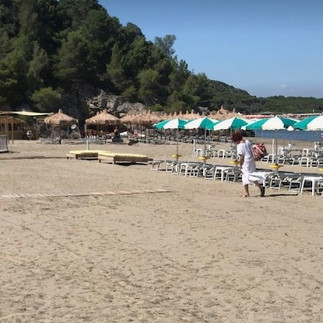Travel:Orbetello, Castiglione della pescaia, Piombino, Italy.3/8th/2024
- Lili Naveh
- Mar 8, 2024
- 3 min read
Updated: Apr 29, 2024
This post is a continuation of a trip North of Rome along the Western coast of Italy.
Civitavecchia -3/6-7 (part 1)
The direct drive from Civitavecchia to livorno

the next town we planned to stay for 2 nights in, usually takes about 3 hours. However the excursions and stops along the coast we made, in Orbotello, Monte Argenterio, Porto Santo , Castiglione della Pescia San Stefano, and Piiommbino extended the driving time



This quint Toscan coast town was found on a thin strip of land stretching out into the middle of the very lagoon from which its name is derived, and is considered an important Natural Reserve

Entering Town

The town is peculiarly shaped like a ship prow anchored in the quiet lagoon waters, it rises on a small peninsula, surrounded by the Eastern and Western lagoons and is divided by an artificial dam , like a gangway to land.connecting Orbetello to the Argentario Promontory since 1841



The 2 lagoons are enclosed by two strips of land called Feniglia and Giannella tombolos, and offer kilometres of enchanting beaches.
Once an Etruscan settlement whose traces remain in the town’s walls, it was also a historic fortified port . In 280 BC it passed under the control of the Romans, who had founded their colony of Cosa . The emperor Domitian had a substantial property here, which belonged and was inherited through his wife Domitia Longina.
The area passed several hands of conquerors until 1860, when it joined the newly unified Kingdom of Italy.
Main Gate at Town
The windmill on the Lagoon


The municipality covers a wide area, including much of the south of the Grossetan Maremma.
Via the Dam's Road we reached, the communities of Monte Argenterio,
Porto Ercole and Porto Santo Stefano.

This headland is surrounded by the sea and connected to the coast by two artificial strips of land is one of Italy’s lesser known tourist spots, where the rich and famous come to hide. This southern Tuscan small peninsula is less of the pretense but offers marine environment, exceptionally mild climate, cheaper food, and serene nature.
In July and August, Argentario’s beaches are packed with Romans, but it’s a very quiet place during off-peak season.

Its ragged coastline is dotted with several shingle beach coves, umbrella pines that hide the luxury villas scattered across the promontory, and .crumbling forts and towers built by the Spanish kings who ruled the area 400 years ago.
Santo Stefano - Argentario

Santo Stefano is the main center of Argentario and offers old pine forests, coastal roads great beaches and enchanting views. The harbor is divided into two parts, the old and the new port, and is the heart of tourist activities, and fishing.
Nearby Island of Giglio and Island of Giannutri, are pearls of the Tuscan archipelago.
Due to its strategic location, this area has been frequented since ancient times by the various peoples who sailed the Mediterranean: among the many traces left by the Romans are the remains of the Bagni di Domiziano (Baths of Domitian), and the Spanish Fortress, which was built for defensive purposes and which, over time, became an important cultural center.

Continuing the drive along the coast up North

The name Pescaia indicates to the history of this old fishing village, dates back to Roman times and was later inhabited by Umbrians and Etruscans,
This historic scenic seaside fishing and beach village is located in the Grosseto area of southern Tuscany, with splendid views of Elba, and Giglio. islands and not too far from the Argentario promontory
Castiglione offers a pine forest, a lagoon and countryside seaside relaxation; to the latter, historic palazzos, a contemporary art park



Piombino is one of the main cities on the Etruscan Coast and has one of the biggest port in Italy, and most used port to go in the Elba Island,
Located on the border between the Ligurian Sea and the Tyrrhenian Sea, in front of Elba Island further north, is this town of about 35,000 inhabitants in the province of Livorno.
Its ancient historical centre, is from the time in which it was the Etruscans' port, near the area of Populonia.and in the Middle Ages, it was an important port of Pisa's Republic.
Getting Closer to Livorno

After a looong drive drive we finally made it to Livorno late in the afternoon
The first half of the day was sunny but the the looming clouds darken the horizon and along with us also entered the rain...
To be continued...































































Comments